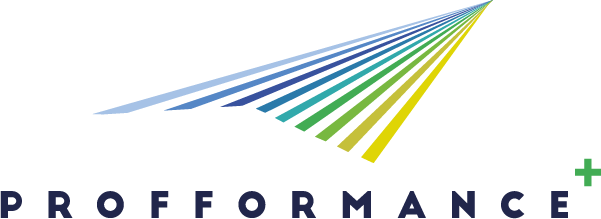TAMEHISIP
Taking Medical History with Simulated Patients in a Student-centred Course
- 01 - Education
- 09 – Health and welfare
1. Student-centered course design
Medical communication training is challenged to meet the demands of a more internationalized world and at the same time applying a student-centred approach. Therefore, our interdisciplinary simulation-based course is designed to improve doctor-patient interaction skills to enable each participant to take medical history effectively in an empathetic manner. At the University of Pécs, Medical School, Hungary, the American standardized patient model from the 1960’s is adapted to advance patient-interviewing, problem-solving, and medical reporting skills. The history taking course in English for international students utilizes actors and lay people to perform as simulated patients under the close observation of medical specialists and linguists. This innovative course is designed to train and navigate students among medical, linguistic, emotional, and socio-cultural complexities of patients. Experts in medicine and language assess student performance, offering feedback and providing individualized training that students might improve their professional and communicative competencies. Through responding to medical emergencies, miscommunications, and conflicts in a safe environment, medical students prepare to deal with a diverse patient context, that more qualified and empathetic health personnel may be employed throughout clinics worldwide. The simulated cases are presented in the Medical Skills Laboratory providing an authentic setting to our course with a hospital ward-like environment. During each session students initiate patient interviews and history taking in small groups (3-4 students), later individually with the lay or actor simulated patient. Feedback is given to the participants based on observation by other student members of the group, the simulated patient, the clinician and the linguist. Our aim is to enable students to learn structured patient-interviews and cope with communication obstacles. Using assertive communication strategies and also expressing empathy to elicit information from the patient, medical students find themselves in life-like situations where they can learn and make mistakes without causing real harm. Therefore, students can enhance at a lower stress level. They also learn case reporting, so from the data collected from the patient they select medically related information and present it to the clinician. We can see a gradually developing code – switch awareness in students from an everyday language to a medical jargon.
Methodology
Tools, equipment, technology used
Outcomes and outputs, main results
Lessons learnt
Adaptability and sustainability of the best practice (for other institutions)
Promotion of best practice
Scope and impact
- Course/department level
- Faculty level
- Institutional level
- Cross-institutional level
- National level
- EU/EHEA/International level
6.1 Digitalization
- Outstanding, innovative, excellent practices of online / blended / hybrid learning
- Innovative, novel methodology in using digital tools/devices in teaching
- Digital skills development and assessment both general and profession-related, embedded in course design, in teaching and assessment
- Novel digital solutions (tools, frameworks, devices, tasks to enhance efficiency and motivation)
Reasoning: It is innovative in its interdisciplinary and blended learning way; more fields of medicine and communication are involved, co-teaching takes place, students of diverse ethnicity and medical background are present. It is hybrid providing the chance for participants to join online, they can practise telemedicine, it uses digital devices/applications for collecting students’ opinions, answers, history taking questions (Padlet/Quizlet), and assessment options (film analysis)
6.2 Internationalization
- Outstanding practices of international online collaborative learning
- Developing students' multicultural awareness
- Courses implemented in international cooperation (projects, co-teaching, virtual/blended mobility, etc.)
- Courses offered to international multicultural students both online and offline
- International projects/research results embedded into course development and T&L
Reasoning: The course design provides and outstanding international collaborative learning opportunity online or offline too (with medical schools of the participating universities). Non-verbal and verbal communication tools are used and their implementation is discussed by the participating multicultural students, simulated patients (native American/ British/German/Hungarian). Differences in patient interviews are drawn attention to. The design was based on American, Australian, German research.
6.3 Inclusion and diversity, universal design
- Inclusive course design, universally designed divers activities to meet special students' needs
- Innovative teaching methodology for inclusion and meet diverse student needs
- (Innovative) use of devices and tools for inclusion
- Senzitivizing students to consider special needs when practicing their profession
- Course includes hints on how the services/products of the profession could be universally designed/inclusive
Reasoning: Students of diverse gender, age and ethnic backgrounds make the future medical team, so we represent an innovative model for inclusion and diversity. Students experience team dynamics in offline and online communication (smooth turn-takings) and identify with different roles (leader/supporter), those with special needs are supported by the team members. We facilitate social growth, develop empathy and improve conscious medical communication skills.
6.4 Sustainability
- Sustainability goals are addressed in the course(s)
- Teaching material contains profession related sustainability aspects
- Extra-curricular student activities for sustainability
- Environmental attitude, skill development and assessment either general or profession-related
- Sustainability aspects are considered in all phases of the learning practice - "hidden curriculum"
Reasoning: Sustainable practices support ecological, human, and economic health and vitality, and our student-centred course acts similarly. It provides an environment for safe and individual growth for each student, and with the cautiously prepared design, the ongoing trainings of the simulated patients (online and offline), and the three-dimensional feedback system the course is a sustainable form of education offline and online too. Individual assessment is guaranteed (individual tasks).

